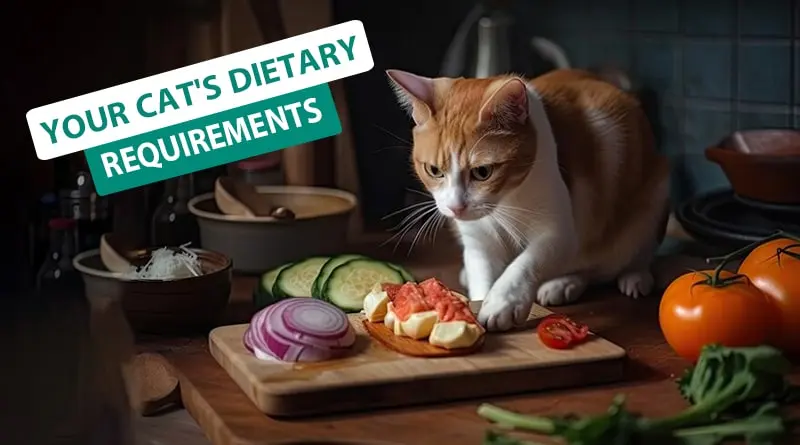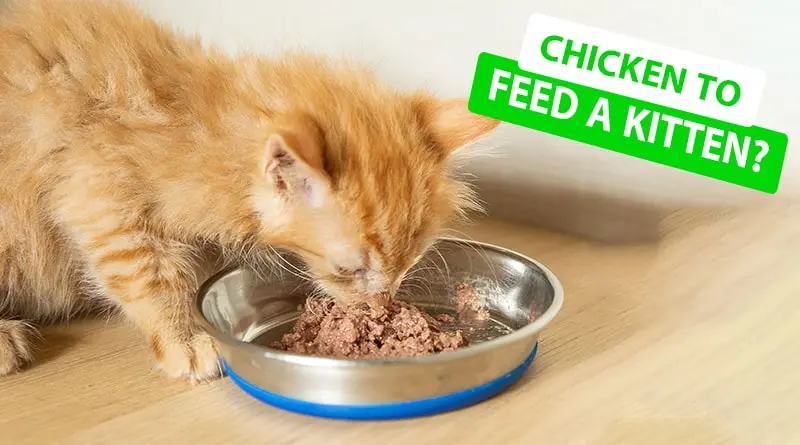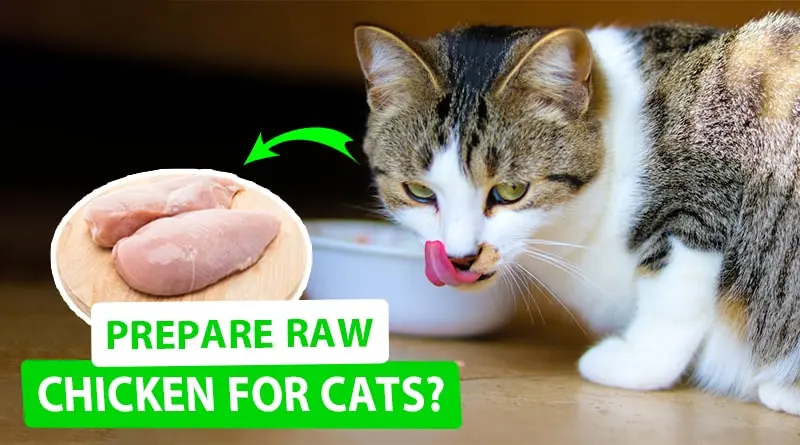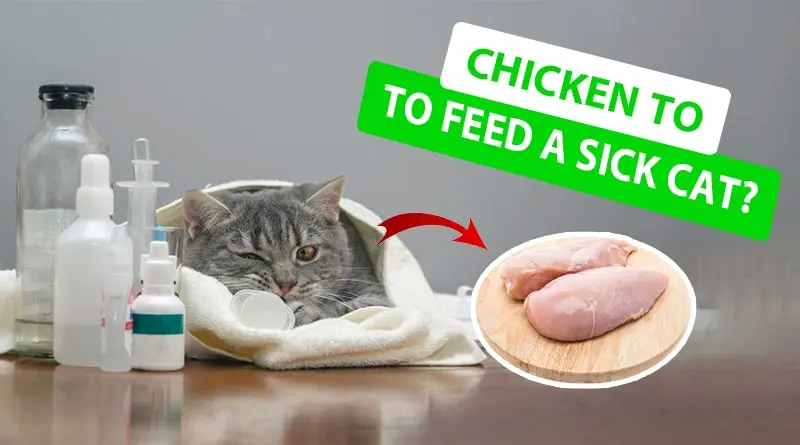
When it comes to our beloved feline close friends, most of us wish to ensure they get the best nutrition. One concern in cat ownership is, “Just How Much Chicken to Feed a Cat per Day?” It’s a valid issue, as the correct amount of Chicken can contribute to your Feline’s overall well-being. Here is the true and short answer to How Much Chicken to Feed a Cat per Day:
If your Feline likes Chicken, How Much Chicken to Feed a Cat per Day?
“The quantity of Chicken to feed a pet cat daily differs based on age, weight, and activity degree. As a rule of thumb, an average 10-pound cat may need around 200-250 calories per Day, with about 40-50% protein. Yet remember, Chicken shouldn’t be the primary diet plan– it’s best utilized as an occasional treat or supplement to balanced feline food. Consult your veterinarian for personalized guidance.”
In this article (How much Chicken to Feed a Cat per Day), we’ll explore the ins and outs of feeding your cat chicken, providing you with valuable insights into their dietary needs.
Understanding Your Cat’s Dietary Requirements

Before diving into the specifics of how much Chicken to feed your Cat, it’s essential to understand their dietary requirements. Felines are obligate carnivores, implying their diet mainly contains animal protein. Poultry, a lean and protein-rich meat, is an excellent selection for your Feline’s diet regimen.
Factors to Consider
The amount of Chicken your Cat needs daily can vary based on several factors:
1. Age: Kittens, adult cats, and seniors have different nutritional needs. Kitties require even more protein as well as calories to support their development. At the same time, senior Cats may need fewer calories to keep weight.
2. Weight: A cat’s weight should also factor into daily food intake. Portion control can be crucial for overweight cats working to shed excess pounds.
3. Activity Level: Active cats shed even more calories and might need more food than their inactive counterparts.
4. Health Conditions: Cats with particular health problems, such as diabetic issues or kidney illness, might require unique diets. Consult your vet for guidance.
How much Chicken to feed a Kitten?

When feeding a Chicken to a kitten, it’s crucial to ensure they receive the right balance of nutrients for their growth and development. Kittens generally call for more healthy protein and calories than adult felines. As a basic standard, you can feed a kitty approximately 2-3% of their body weight in Poultry daily. This can be divided right into numerous small dishes.
However, you must consult your vet to determine the precise amount of Chicken your details kitten demands. They can supply individualized suggestions based on your kitty’s age, weight, and overall health and wellness, ensuring they receive the proper nourishment for their phase of life.
Additionally, commercial kitten food formulated to meet AAFCO (Association of American Feed Control Officials) standards is essential to their diet to provide all necessary nutrients. Chicken can be a tasty enhancement yet should not be the single source of nourishment for a growing kitty.
Here is the Most Popular Question: “What Happens if a Dog Eats Too Many Dentastix?“
Can Kittens Eat Cooked Chicken?
Yes, kitty cats can consume cooked Poultry in moderation if your kitty cat has to do with 3 to 4 weeks old. After that, don’t use Chicken as Food. Cooked Chicken is an excellent resource of healthy protein and can be a healthy addition to a kitty’s diet regimen.
However, there are some crucial considerations to keep in mind:
- Variety: Feeding different foods can help ensure your kitty cat obtains an all-round diet plan. In addition to Chicken, provide a mix of high-quality kitten kibble and canned kitten food recommended by your veterinarian.
- Bone-Free: Eliminate all bones from the Chicken before supplying it to your kitty cat. Cooked bones can splinter and pose a choking hazard or create internal injuries.
- Moderation: While cooked Chicken can be a nutritious treat or supplement to a kitten’s regular diet, it should not replace specially formulated kitten food. Business kitty food is developed to give all the vital nutrients kitties require for healthy and balanced development and growth.
- Plain Chicken: Feed plain, unseasoned Poultry without added seasonings, sauces, or spices. Felines have delicate digestion systems; some seasonings or ingredients can be harmful.
- Proper Cooking: Make sure that the Poultry is thoroughly prepared, without any pink areas, and an inner temperature level of a minimum of 165 ° F( 74 ° C ). This eliminates the threat of hazardous germs like salmonella.
General Guidelines
As a general standard, an average-sized adult cat, around 10 pounds, may require approximately 200-250 calories daily. 40-50% of these calories must originate from healthy protein.
When it comes to Chicken, you can include it as part of your Cat’s diet. However, it should not be the sole source of their nutrition.
A well-balanced commercial cat food that fulfills the Association of American Feed Control Officials (AAFCO) requirements is suggested as the primary source of their diet regimen. The Chicken can be a tasty, nourishing, periodic treat or supplemental healthy protein resource. Always consult with a veterinarian for specific feeding recommendations for your Cat.
How to prepare Raw Chicken for Cats?

Preparing raw Chicken for cats requires careful handling to ensure it’s safe and nutritious for your feline friend.
Here’s a crucial guide on how to prepare raw Chicken for felines:
1. Choose High-Quality Chicken:
Beginning with fresh, top-quality Chicken. Skinless, boneless Chicken busts or thighs are great alternatives. Avoid Chicken with added spices, sauces, or flavors, as these can harm pet cats.
2. Wash Hands and Utensils:
Before taking care of the Chicken, extensively wash your hands and all tools with soap and warm water to stop cross-contamination.
3. Cut into Small Pieces:
Use a clean knife and cutting board to cut the Chicken into small, bite-sized pieces. Ensure there are no bones, as prepared bones can splinter and pose a threat to cats. You can additionally grind the Chicken if you choose a better texture.
4. Serve Promptly or Freeze:
Raw Chicken can quickly spoil, so serve it to your Cat promptly or store it in an airtight container in the refrigerator for a short time. If you have a larger quantity, you can freeze sections in impermeable containers or freezer bags. Defrost icy Chicken in the refrigerator before serving.
5. Supplement as Needed:
While raw Chicken can be a nutritious addition to your Cat’s diet, it’s not a complete meal. Consider including a feline vitamin and mineral supplement to ensure your pet cat obtains all the essential nutrients. Consult your vet for support on supplements.
6. Monitor for Allergies or Digestive Issues:
When introducing raw Chicken into your Cat’s diet, watch them for any signs of allergies or digestive problems, such as vomiting or diarrhea. If you see any adverse reactions, discontinue feeding raw Chicken and consult your vet.
7. Practice Safe Food Handling:
Be cautious when dealing with raw Chicken to avoid contamination. Laundry your hands, tools, and surface areas thoroughly after preparation to prevent the spread of unsafe microorganisms.
While raw Chicken can be a tasty and natural option for some cats, it’s not suitable for all felines, especially those with compromised immune systems or specific health conditions. Constantly prioritize your Feline’s security and health when considering dietary changes.
Here is the Most Popular Question: “Can Cats Eat Mochi?“
Feeding Chicken Safely
If you choose to integrate Chicken into your Feline’s diet, there are a couple of vital steps to follow:
1. Cooking: Always guarantee the Chicken is wholly cooked to eliminate harmful microorganisms. Plain, boneless, skinless chicken breast is a safe choice.
2. Portion Control: Moderation is key. Deal tiny, bite-sized pieces of cooked Chicken as a treat or mix it into their regular cat food.
3. Avoid Seasonings: Do not season the Chicken with salt, spices, or herbs. Plain, cooked Chicken is the best option.
4. Monitor for Allergies: Keep an eye on your Cat after introducing Chicken for any signs of allergies or digestive issues.
How much Chicken to feed a Sick Cat?

Sick cats didn’t eat anything during the sickness. If you feed Chicken to your Cat, cut it into small equal portions and boil the Chicken. Maintain refrigerated till ready to use. After that, cozy right before feeding. Feed one mug per day for every 20 lbs. of body weight.
Feeding a sick cat, including Chicken, should be done under veterinary guidance. Follow your vet’s recommendations to offer small, frequent meals of plain, cooked Chicken and rice.
Here are some general points to consider when determining how much chicken to feed a sick cat:
- Choose Lean Chicken
- Portion Control Frequent, Small Meals
- Gradual Introduction
- Monitor Their Response
- Supplement with Other Nutrients
Here is the Most Popular Question: “Do Cats Get Depressed after Abortion?“
Conclusion
In our quest to understand “How much Chicken to Feed a Cat per Day,” we’ve learned some valuable lessons about feline nutrition.
Cats are primarily meat-eaters, and Chicken can be a healthy part of their diet. However, it’s not a one-size-fits-all situation. Your Cat’s age, activity level, weight, and health issues should influence how much Chicken they get.
While Poultry is an outstanding healthy protein source, it must always align with their routine pet cat food. Commercial cat food is carefully balanced to provide all the essential nutrients.
When you give your Cat some chicken, make sure it’s cooked plain and in small, bite-sized pieces. Keep an eye out for uncommon reactions, just in case they have an allergic reaction.
Yet the most vital guidance is this: speak with your vet. They can supply personalized guidance based on your Cat’s one-of-a-kind requirements.
Disclaimer
This blog post (How much Chicken to Feed a Cat per Day) contains essential information. I am not a veterinarian or pet Cat dietary professional. If your Cat discloses any indication of ailment, call your veterinarian.
Bear in mind that every Cat is Different, and if you have any worries regarding your canine’s health or practices, do not wait to seek specialist recommendations from your veterinarian.
If you want more knowledge about Pet Nutrition, visit our Blog Section.



























